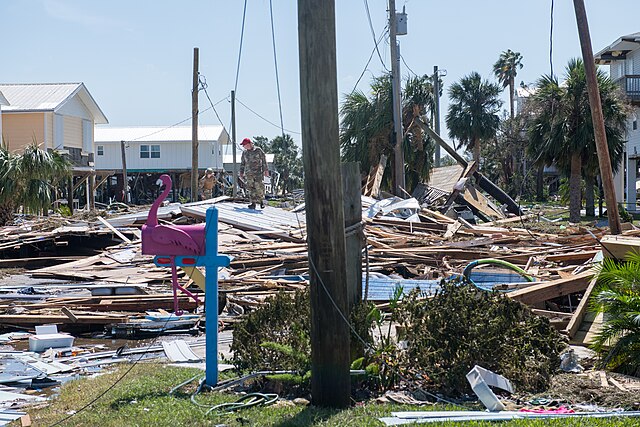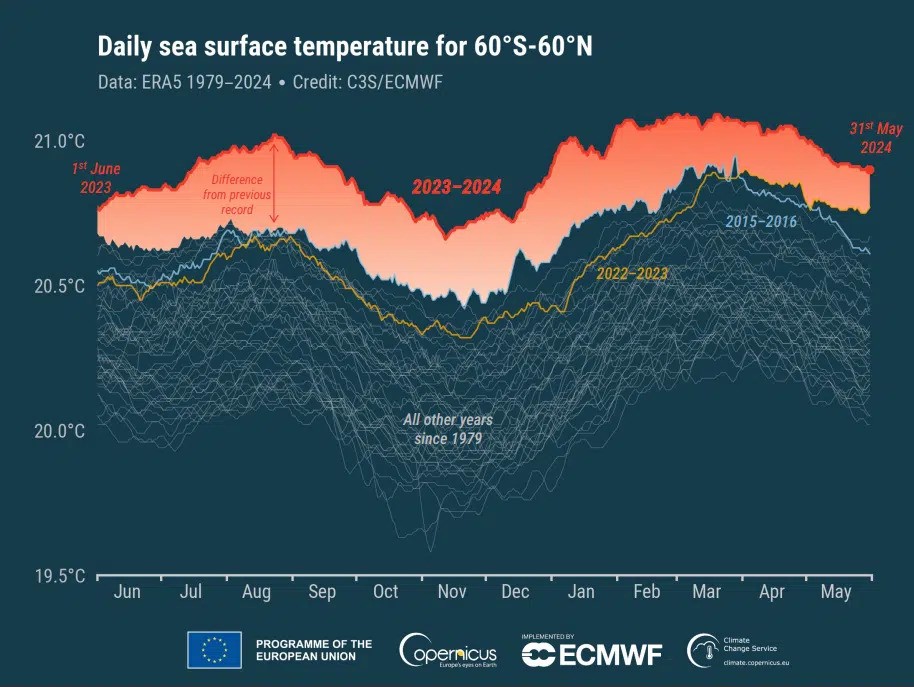 Within just a few days, Hurricane Helene brought record-breaking destruction. It dumped over 40 trillion gallons of rain, causing havoc across six states.
Within just a few days, Hurricane Helene brought record-breaking destruction. It dumped over 40 trillion gallons of rain, causing havoc across six states.
Over 230 people died, millions lost access to electricity and water, and entire cities were demolished. Helene also knocked out a critical data center used by NOAA to track weather and climate data.
Category 4 Helene was followed soon after by Milton, a Category 3 hurricane. Let's find out what is making hurricanes so intense and their widespread impacts.
Why So Powerful?
In the days leading up to the hurricane, heavy rainfall swept across the southeastern U.S. When Helene hit, the ground was unable to soak up more moisture, causing excess water to be hurled toward low-lying land. The water vapor on the ground prolonged the storm’s life, thus allowing its trail of destruction to travel more inland.
Scientists found that climate change is responsible for both the initial weather and the intense storms. As temperatures rise, more water evaporates leading to heavy rainfall. Helene’s strong winds sent some of the moist tropical air north. This caused a heavy downpour in regions where the storm didn’t even reach. Both hurricanes also spawned tornadoes that caused additional damage.
Scientists point to the water temperatures that have risen by around 2.3℉ above its average conditions. The high water temperatures allowed Helene to intensify from Category 1 to Category 4 in under 24 hours. These hot weather conditions that caused Helene are now 200–500 times more common. This means that intense storms will become more frequent in the future.
Widespread Impacts
 Helene took down houses, trees, cars, and even pieces of asphalt on the road. As flooding spread, water accumulated in low-lying regions, including bodies of water or valleys. The water was funneled downhill, creating fast-moving rivers that carried debris long distances. This contributed to more evacuations and destruction.
Helene took down houses, trees, cars, and even pieces of asphalt on the road. As flooding spread, water accumulated in low-lying regions, including bodies of water or valleys. The water was funneled downhill, creating fast-moving rivers that carried debris long distances. This contributed to more evacuations and destruction.
The city of Asheville, which houses the data center that tracks the nation’s weather and climate data, was hit hard. The data center needs water for cooling and depends on the city of Asheville's municipal water supply which was damaged by Helene. Scientists were unable to access the servers for nearly a month; 80% of the system is finally back online.
Wildlife has also faced catastrophic consequences. For one, the protected Manatees in Florida were at risk of being stranded in unfamiliar areas as a result of water levels rising and then eventually falling. Their primary food source, seagrass beds can also be at risk during hurricanes.
Additionally, livestock in factory farming facilities are often abandoned and left stuck inside buildings. The strong winds pushed the surface of the water, leading to a lack of oxygen that killed many fish. Other animals are vulnerable to displacement as well. With the impacts of Helene, the death toll of all wildlife is likely in the millions.
Extreme storms such as Helene and Milton serve as an important warning of what will happen if we allow climate change to progress. However, with scientists continuing to study the impact of climate change on extreme weather, we can expect improved preparation and resilience to mitigate their destruction in the future.
Sources: Inside Climate, Washington Post, NBC, NYTimes, NOAA, Earth.org







